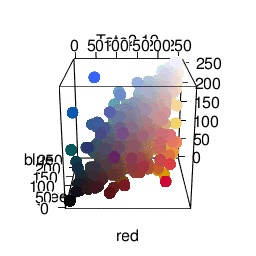— Data science
This study, conducted as part of a seminar, explores the potential of Data Science in the field of art history and museum collections. It is important to note that no general conclusions can be drawn about art movements—this research specifically examines museum collections. The study analyzes the evolution of color in modern art by examining paintings from the Museum of Modern Art (MoMA) and the Tate Gallery from 1900 to today. Using data-driven methods, it investigates how historical events, such as World War I and II, influenced the color choices in museum acquisitions. The findings reveal a shift from darker tones before 1950 to brighter, more vibrant colors in post-war artworks, reflecting a cultural move toward abstraction and renewal. By applying advanced image analysis techniquesand 3D color mapping, the study highlights trends in museum acquisition strategies while also emphasizing the limitations of digital reproductions—factors such as lighting, texture, and museum documentation influence color perception. Ultimately, this research serves as an example of how Data Science can be integrated into collection management.
credits: Stephan Lachner/ Anna Dedi



